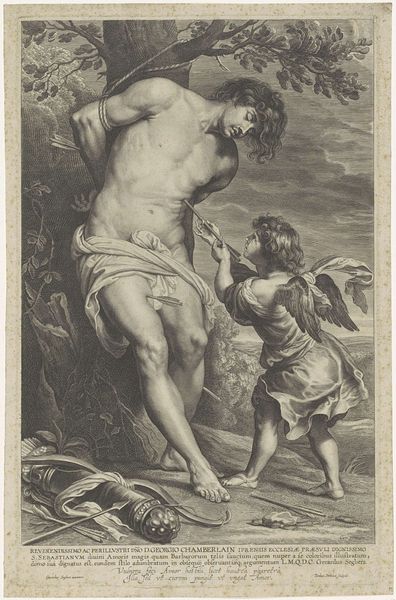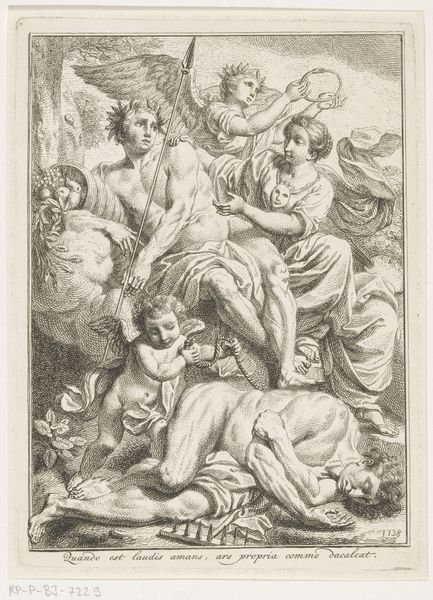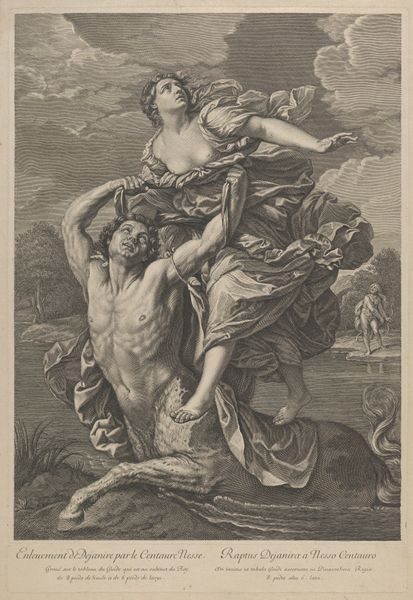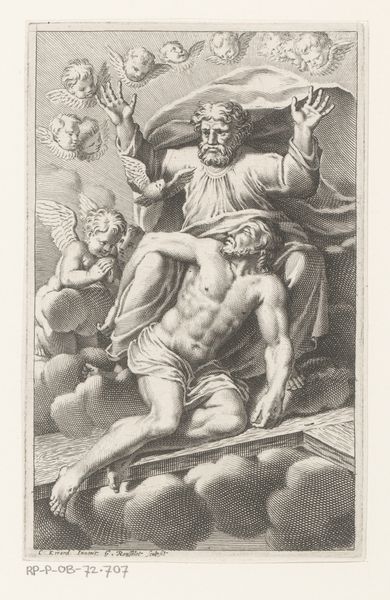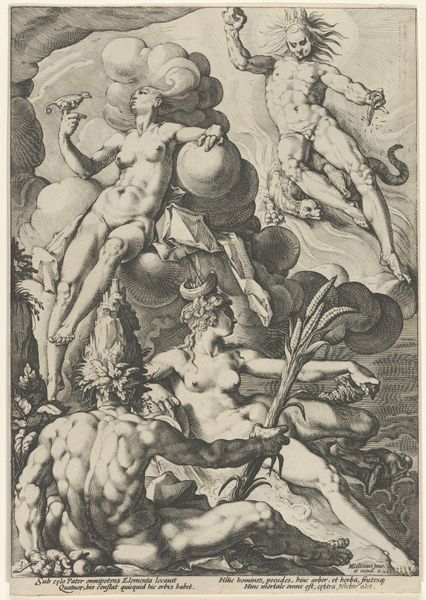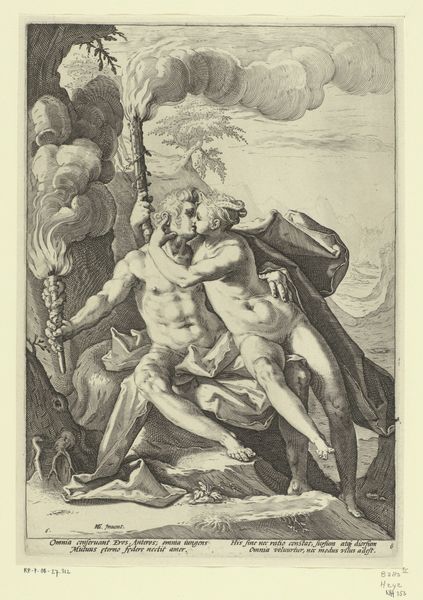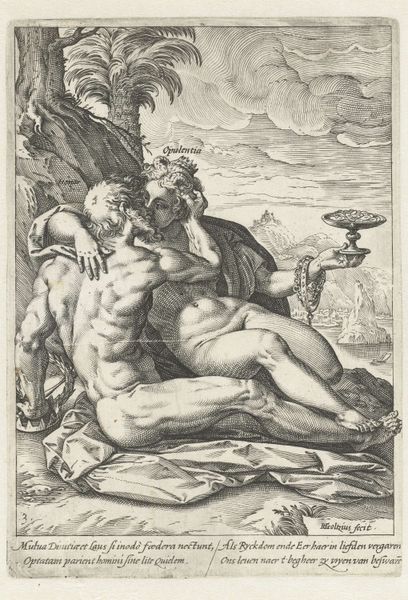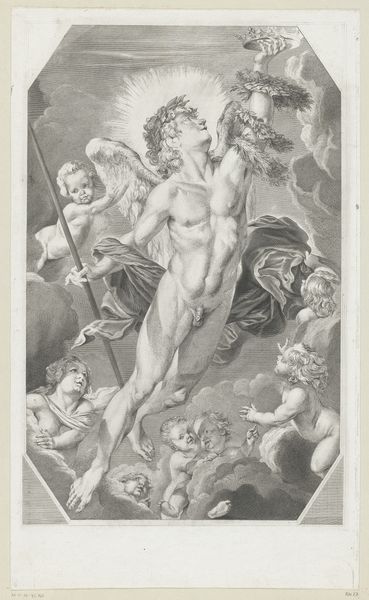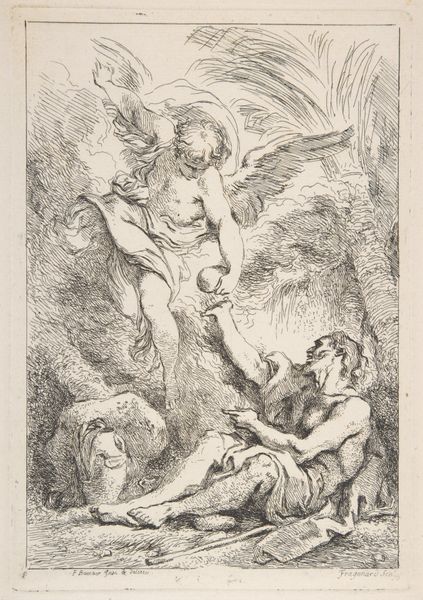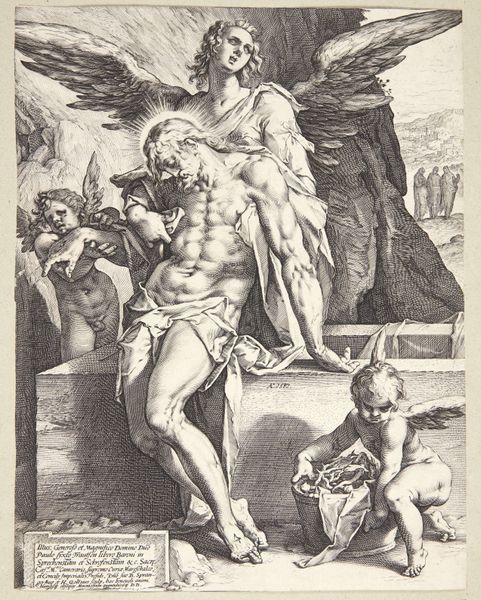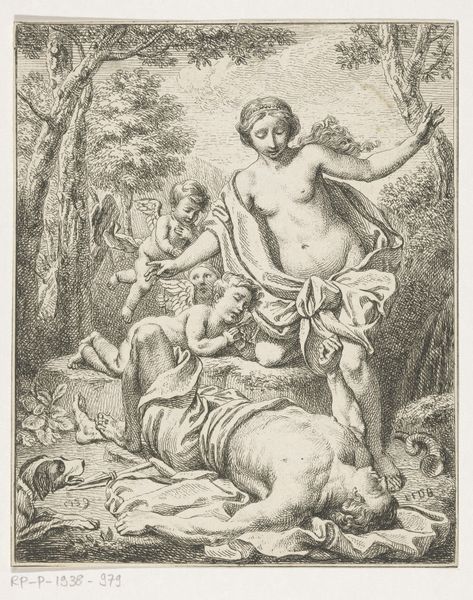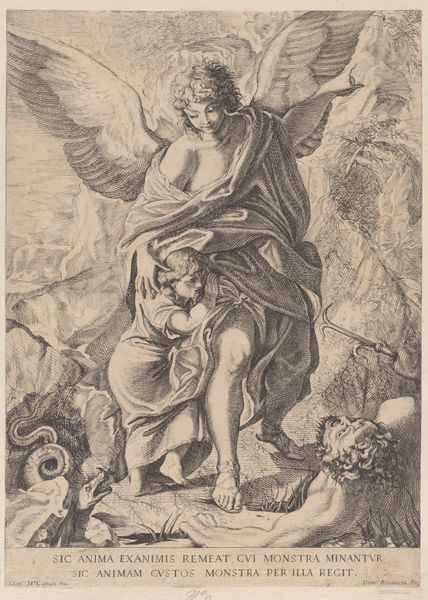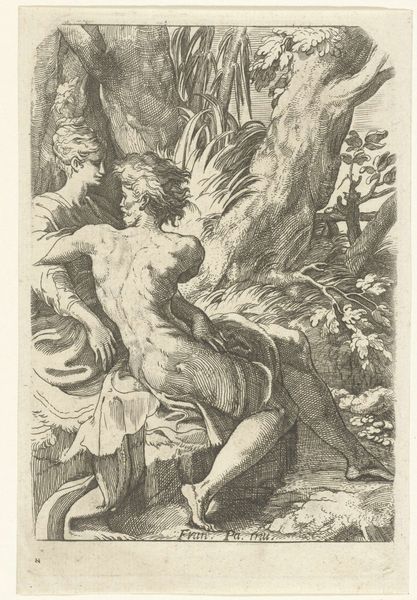
engraving
#
allegory
#
baroque
#
old engraving style
#
caricature
#
figuration
#
history-painting
#
nude
#
engraving
Dimensions: height 236 mm, width 140 mm
Copyright: Rijks Museum: Open Domain
Curator: Welcome. Today we’re looking at an engraving titled “H. Sebastiaan,” dating from somewhere between 1630 and 1680, by an anonymous artist. It’s currently held here at the Rijksmuseum. Editor: Oof, immediately that's just…intense. The light is so dramatic on Sebastian, and the whole scene feels incredibly staged, theatrical almost. The Cupid is really working that "concerned angel" vibe. Curator: Yes, there’s definitely a performative aspect to Baroque art. The drama served to inspire and instruct the viewer. Consider how St. Sebastian’s image was frequently employed. He was often seen as a protector against plagues. Editor: So a pin-up boy of the plague years? Interesting. It also strikes me, looking at this engraving—aren't there a lot of cherubs? And his armour just discarded down at the bottom. Does this engraving aim to convey themes of martyrdom, or...surrender? Curator: Exactly. The iconography certainly alludes to those elements. Sebastian, as a Roman soldier, embodies sacrifice through religious persecution. But notice also, that while tied to a tree and pierced by arrows, his expression is… serene, almost contemplative. This denotes the moment of divine intervention and glorification, right. It presents him not as a victim, but as a triumphant martyr. And there's Cupid offering a crown above him in glory. Editor: True, he's definitely serving some stoic martyr realness. And is it me or is the angel below sort of… re-wounding him with another arrow? Like, dude, maybe just stick to delivering salvation, yeah? The narrative of continual suffering makes me feel uneasy, as does the passivity with which Sebastian endures all of this torment. What was the public role for imagery like this in its time? Curator: Art in the Baroque period, particularly religious art, played a significant role in reaffirming faith during the Counter-Reformation. Pieces like "H. Sebastiaan" visualized complex theological concepts, making them more accessible and emotionally resonant for the faithful. In many ways, these images reinforced established Church dogma in a period marked by uncertainty. Editor: So propaganda through beauty and suffering. It is definitely visually striking. So, now as then, what does this print invite the public to really see? What kind of power dynamics are on display for consideration today? Curator: That's precisely why understanding its original context allows us to then have this broader cultural conversation now. Editor: Right, to keep questioning its continuing visual presence, from that vantage point of then and now, or otherwise just to feel stuff… it all informs the present, doesn’t it?
Comments
No comments
Be the first to comment and join the conversation on the ultimate creative platform.
